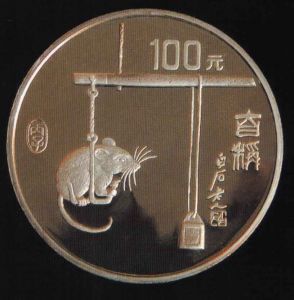The Chinese Yuan’s Anticipated Rise – Investment Implications (Part 1)
 Expected Chinese yuan improvement could provide us with an investment opportunity. However, before going there, I thought a review of challenging exchange rate math would help ensure full understanding.
Expected Chinese yuan improvement could provide us with an investment opportunity. However, before going there, I thought a review of challenging exchange rate math would help ensure full understanding.
To start, if I said I just bought gasoline for $3.00 a gallon, you’d know exactly what I meant. And if you saw that gas had risen from $3.00 to $3.30, you’d know that there had been a 10% increase. These pricing and percentage change conventions are ingrained into our everyday thinking. Now let’s enter the currency exchange world…
A recent Bloomberg article described the possible move in the Chinese yuan’s exchange rate. The report said that the markets expected the yuan, now at 6.8269, would rise about 3% in a year – to 6.6285. “WHAT?” you might reasonably exclaim. A quick check on the calculator shows that a move from 6.8269 to 6.6285 is a 2.9% decline. Did Bloomberg blow the calculation? Unfortunately, no.
First off, notice that those numbers do not have a dollar sign in front of them. That’s because the exchange rate for the yuan is quoted in yuan, not dollars. Thus, 6.8269 means yuan per dollar. In my gasoline example, it would be like me saying I bought gas at .333 (gallons per dollar). And that 10% increase would be a 9% decline to .303.
This means that, to make understanding easier, we must convert such numbers. Fortunately, doing so is easy. To convert from gallons-per-dollar to dollars-per-gallon, we just need the reciprocal (i.e., dividing into 1). Thus, dividing 1.00 by 0.333 (gallons/dollar) gives us $3.00 (dollars/gallon).
Using that math, let’s convert those yuan exchange rates to prices we can use. First, divide 1 dollar by 6.8269 yuan and we get $0.14648 dollars/yuan. Likewise, 6.6285 becomes $0.15086. Now, let’s reword Bloomberg’s message with our new, understandable numbers:
The markets expect the yuan to rise from $0.14648 to $0.15086, an increase of about 3%. Ah, now it makes sense. And now we can see the beginning of an investment opportunity, perhaps: buy something valued in yuan.
Why isn’t the yuan exchange rate quoted in dollars?
This question is especially relevant when we see that exchange rates flip-flop. The Japanese yen, similar to the yuan, is quoted in yen/dollar (about 90) – likewise for many other world currencies. However, the British pound and European euro are priced in dollars – about $1.50 per pound and $1.35 per euro.
The answer is in the numbers. Note that each exchange rate is greater than one. It’s simply easier to deal with the larger numbers. Japan is a good example. Converting an exchange rate of 90 yen/dollar into dollars/yen gives us an exchange rate of slightly over one penny ($0.0111). Way too many decimals are needed to work with such low rates.
This convention is accepted because exchange rates involve two currencies – meaning one currency holder “wins” and the other “loses”. For example, the British, who are accustomed to prices expressed in pounds, would prefer the US dollar exchange rate in pounds per dollar. So, in this case, we win.
With this understanding, and a trusty calculator, we can now evaluate what the Chinese yuan’s expected rise might mean to us investors. More tomorrow…




